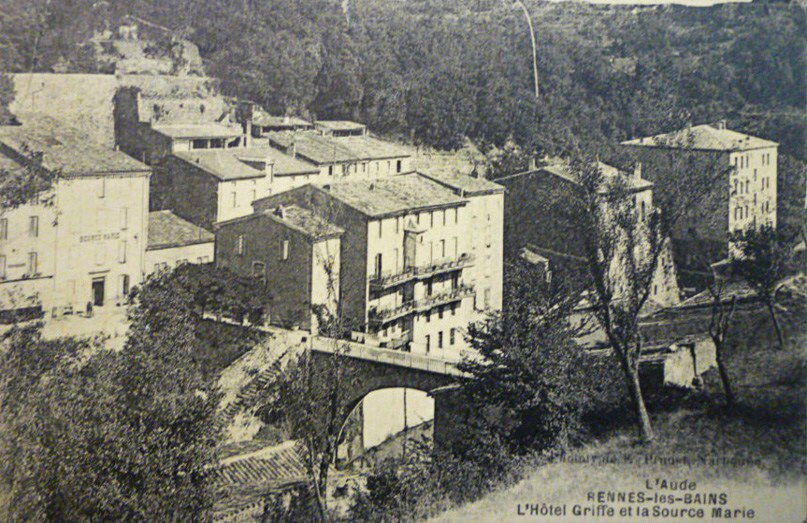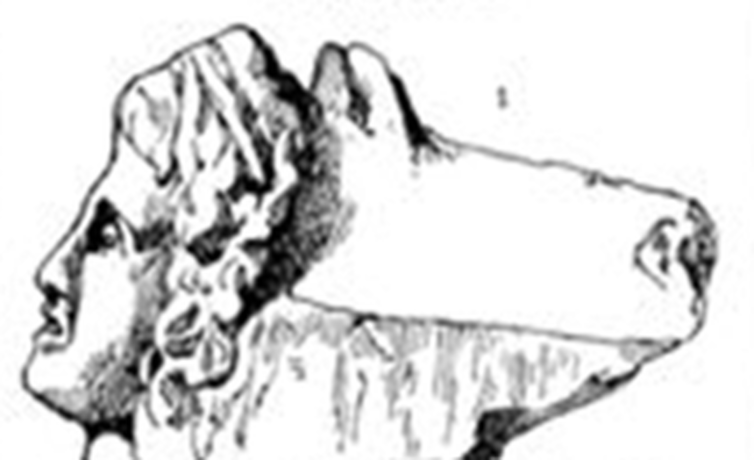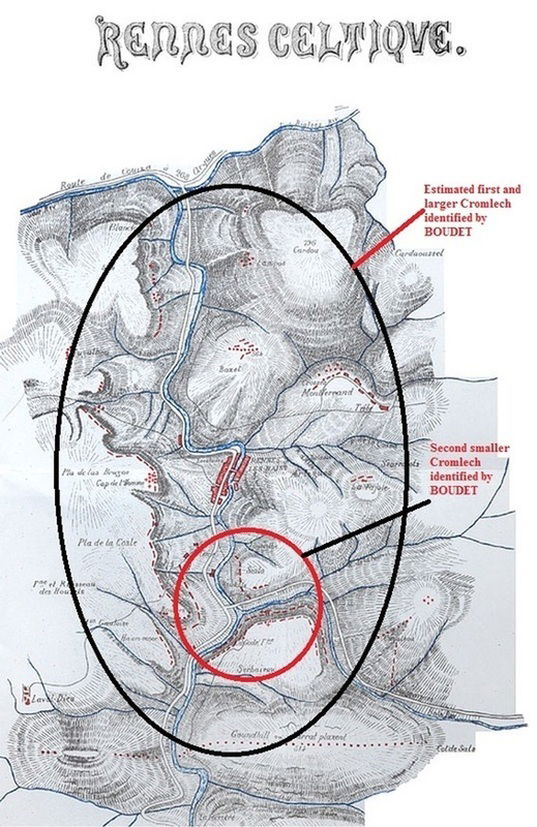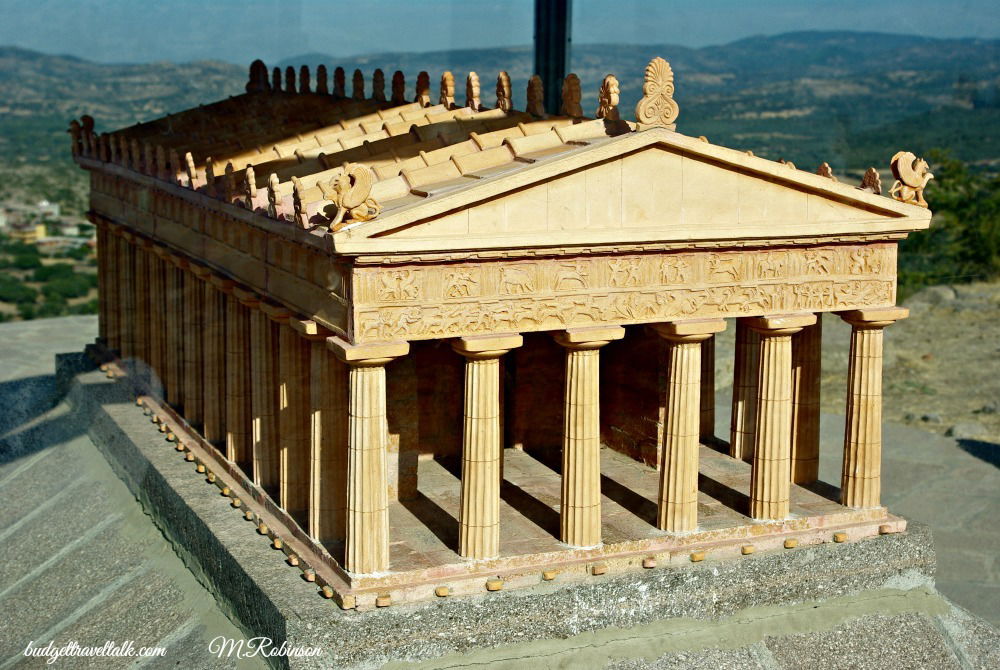What's in a Head?
In a 1913 article - a journalist after he had visited Rennes-les-Bains wrote;
'thirty rustic houses, well built, welcome visitors and provide them food and shelter following the wide price ranges: each to his convenience is accommodation and food according to your pocket and pleasures; numerous customers come from all around, this year we have more than 20. Three come from Switzerland, another is a famous musician emerita in Geneva, another is American, many living in Nice; among them, a lady of the court of England, not least, the Marquesa S .., whose beauty was really impressive, and in which her ego emphasised the elegance of a profile and a distinction without precedent; the Hôtel Griffe, a type of good modern family hotel, built and furnished again, not too big, and maintained by a team led by Mr. and Mrs. Griffe. Mr. Griffe, cheerful, long - time resident in London, where he was head of the Traveller's Club & Mme. Griffe, a native of Luxembourg and one of the great dressmakers of London. Mr. and Mrs. Griffe come every year to spend the bathing season at Rennes, and they contribute to the construction, development and maintenance of the hotel, and of good treatment and English comfort: good food, English for those who wish specialties".
The Londoners GRIFFE and their hotel at Rennes is linked to the priest of the village Henri Boudet. Boudet, that strange archaeologist priest who abhorred the finding of a naked statue of Venus in the courtyard of the Maison Chalaleu and who was obsessed by an imaginary 'head' and an imaginary cromleck wrote:
"the “tête du sauveur” [is] a menhir [i.e. a standing stone] preserved on this site [a hill above Rennes-les-Bains] and it is a [head] which is carved, in high relief, and represents a magnificent head of the Lord Jesus, the Saviour of Mankind. This sculpture, which has seen approximately 18 centuries, has given its name to this part of the plateau, Cap de l’Homme, the Head of Man, referring to the man par excellence, filius hominis. It is deplorable that we were obliged, in December 1884, to remove this beautiful sculpture from the location it occupied, to remove it from the ravages of a pick-ax of an unfortunate young man, who was far removed from being able to understand the significance and its value.”
Firstly we may ask about this seemingly absurdity of a tête du sauveur - representing Jesus - being on display in the village of Rennes-les-Bains? Boudet writes that it had been present for approximately 18 centuries in his famous book LA vrai Langue Celtique which was published in 1886. Therefore Boudet was saying at Rennes there was a sculptured head of Christ present from as early as 86AD! How bizarre!
Is it possible a statue of Christ would be here? Who would have built it?
Archaeological artifacts indicate that this ancient spa was at one time popular with the Roman colony in Colonia Narbo Martius. The historical Jesus lived in Jerusalem ruled by the Romans and Strabo had already written;
Narbo is spoken of as the naval-station of the Arecomisci alone, though it would be fairer to add "and of the rest of Celtica" - so greatly has it surpassed the others in the number of people who use it as a trade center. [...] They are no longer barbarians, but are, for the most part, transformed to the type of the Romans, both in their speech and in their modes of living, and some of them in their civic life as well.
When Strabo wrote these words, Julius Caesar had already refounded the city. The reason for this was that the most powerful city in southern France, Massilia, had resisted Caesar during the civil wars; the dictator now wanted to break its power and therefore resettled Narbo with veterans of the Tenth Legion. The full name of the city was now Colonia Julia Paterna Decumanorum, "the ancestral Julian colony of the soldiers of the Tenth". The underground warehouse and the House of the Genius date back to this age. The emperor Augustus used Narbo as the capital of not just Gallia Narbonensis, but the three other Gallic provinces as well.
Narbonne was an important trade center. A mosaic in Ostia proves the existence of a group of sailors who were specialised in the trade between Narbo and the port of Rome.
the summer of 39 AD, that Antipas' money and territory were turned over to Agrippa, brother of Herodias, when Antipas was exiled.
His place of exile is described by Josephus in Antiquities as Lugdunum, a city in Gaul, and as Spain in Wars of the Jews. There are two places in France that claim to be the place of exile: Lyon (Lugdunum) and Saint-Bertrand-de-Comminges (Lugdunum Convenae), on the Spanish border. It is this second city that is the most obvious place, a famous city of Romans in the 1st century [see HERE].
Antipas and Herodias would have been exiled with some of their close retinue - certainly early Jewish Christians perhaps as well as their staff and perhaps other family members.
Be that as it may - why did Boudet speak of this head? This seemed to be confused with another head found on land owned by the Fleury family;
"Madame TIFFOUS, born Alys GRIFFE, in 1886, at Rennes-les-Bains, said: "Mr De GROSSOUVRE mining engineer in Bourges, Colonel TOUCAS, Périgueux, and my father Joseph GRIFFE of Rennes sought the veins of ore at the Pla de la Côte or Pla des Bruyères, on land owned by Count H. De Fleury. They found a boulder which seemed interesting, brought it to my father and the Abbe Boudet [of Rennes les Bains] to have it cleaned up and [we] saw it was a head. MARTIN, mason, on the order of Abbe Boudet placed the head at the place where it is still, [and] this happened around my twelfth year, i.e. about 1898".

There is even more confusion though!
There is another Boudet 'head' - which Boudet himself says he gave to Mr. CAILHOL of Alet. Then there is the 'boulder' head found on land owned by the Count Fleury in the region of Pla de la Côte or Pla des Bruyères perhaps referred to above.
However another historian, Gourdon, seems to refer to a further head - he even gives us a diagram - and he says it was found along with much other archaeology in Rennes-les-Bains.
He writes:
'in several points of the village today, mainly in the part between Bain-Fort and the hamlet of Le Cercle, it has been recognised, at various depths, a great quantity of remains of Roman buildings: constructions of buildings, fragments of mosaics, etc, which may have been part, either of private houses/villas or monuments of another order. The literal space occupied by these objects indicates an extended and fairly large city, in the Valley, spread out to the broader and more Southern area of the village. In this Valley, there was seen, in the middle of a cultivated field, the site of a square house, recognisable from the lines and 'crop marks' found in the vegetation where it was much less bushy than in the corresponding parts of older buildings. It is at this point especially there [that] have been found, in the ground raised by agricultural implements, a huge amount of debris of all kinds, most covered with a layer of ash and charred fragments, testifying to the destiny of this ancient city, which, at the time when the whole country was ravaged by barbarians, was destroyed by fire. .... Among the items discovered in the above cited circumstances, are objects of architecture, sculpture, pottery and various interior utensils, etc.
The objects of architecture seem to be the most significant - they were found on the site of a house that actually forms the last house of the village of Bains, to the South; [we now know this house is the Maison Chalaleu where the Boudet statue of Vnus was found, or if you prefer, the statue of the White Queen] they consist of several sizable fragments of capitals, columns, etc., of remarkable work, in which it is easy to recognise the debris of a temple, dedicated either to Aesculapius or Hygeia. One of these fragments is the base of a column that can be currently seen at the fountain of the Cercle, where it has been used as a capital/cornice, and that its dimensions allow us to consider that it formed the base of a column of more than 10 meters in height. Also an antefixe [?] in white terracotta, of an an elegant model".
An antéfixe is an architectural term describing an ornament of sculpture which was used in antiquity, which decorated the bottom and sometimes the top of the roofs of buildings whether public or private. From my reading this means the 'Gourdon' head was found among the other archaeology in the valley around the hamlet of Le Cercle.
He provides a drawing of this head, which depicts a female head [local Goddess?] and maybe was an ornament that probably adorned a large - i suspect- public building in the south of the village between Bain Fort and Le Cercle.
Gourdon never says that the head was sealed in the presbytery at Rennes, he never provides pictures or diagrams of the 'head' in the presbytery and he never says the head was found in the region of Pla de la Côte or Pla des Bruyères.
However, on the wall of the presbytery at Rennes-les-Bains, under the carved head placed there - it reads "sculpture of a detached standing stone located on the extreme edge of Pla des Bruyères, facing the parish church’. [sculpture détachée d'un menhir placé sur l'extrême rebord du Pla des Bruyères, faisant face à l'église paroissiale".] This is the famous head of Dagobert of Priory of Sion mythology.
Gourdon goes on: These various objects are kept in the cabinet of M. de Fleury, owner of the Bains and the discoveries - which date back various eras, are only a very small part of what has been found in the country during the course of the last few centuries. It would have been interesting to keep them as souvenirs and as historical evidence of the village's ancient splendour as a spa town, but they have unfortunately disappeared, and is extant only in the writings that we have made mention.
He refers to the work of Abbe Delmas - who by the way, never cites this 'head' in the presbytery or the one Gourdon draws.
Therefore it seems it was found after 1709, but before 1874 [when Gourdon mentioned the antefix head].
This would also suggest another head because the testimony of Mme TIFFOUS, born Alys GRIFFE of the finding of " a boulder which seemed interesting, brought it to my father and the Abbe Boudet [of Rennes les Bains] to have it cleaned up and [we] saw it was a head. MARTIN, mason, on the order of Abbe Boudet placed the head at the place where it is still, [and] this happened around my twelfth year, i.e. about 1898." As you can see the date of 1898 is much too late. The head is pictured below.

Two archaeologists, in an article discussing the Gourdon head, mention;
" ...the location of the find as antefixes eliminates its allocation as a decorative element placed on a building used for public worship. It seems that the size and shape prohibit this: it is either a votive or a fragment of tombstone, or the character is represented in bust or foot. We think we see in this representation one of the innumerable minor goddesses, more or less Romanised in the Gallic pantheon".
It seems there is a dispute about where this Gourdon 'head' was found - it had nothing to do with the land owned by Count Fleury but more to do with the hamlet of Le Cercle. And in fact, placed in Boudet's second cromlech, inside the more famous larger cromlech is based around Le Cercle.

Perhaps Gourdon is right, the head was originally found in the vicinity of the valley of Le Cercle, perhaps a Temple because as we know the Maison Chalaleu was built over some extensive and considerable Roman foundations, thought by on-lookers [and by Boudet himself] to be Temple remains, and perhaps this head represented a local Goddess and divinity of the spa waters, and was indeed an antefix found on a public Temple building found in Le Cercle?
Below is an illustration and examples of these antefixes:
